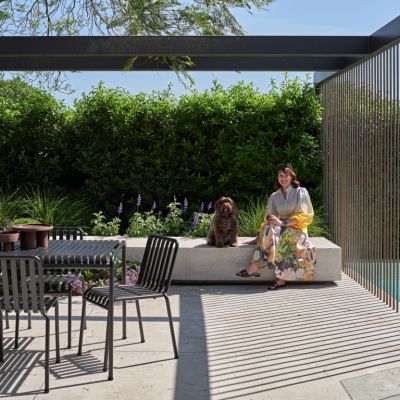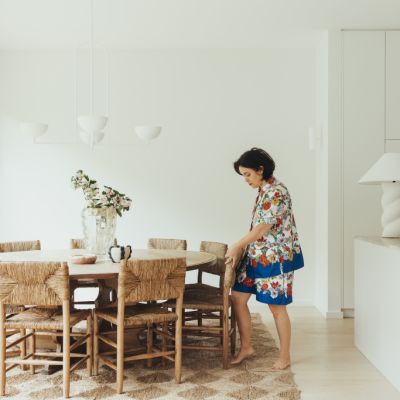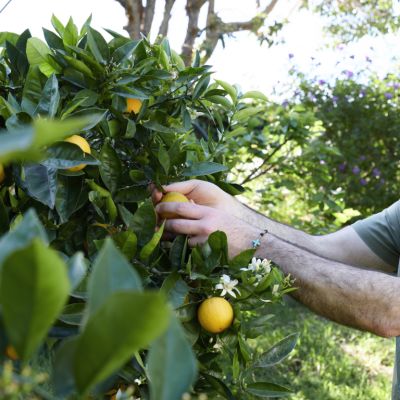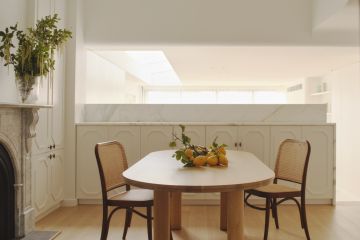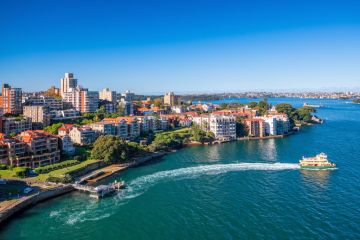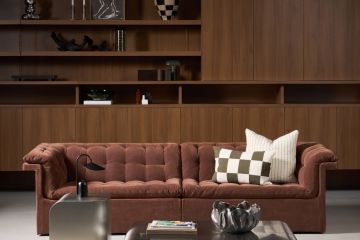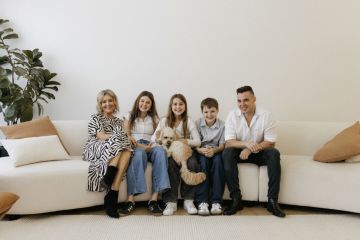Jordan Fleming’s gangly lamps seem (almost) alive
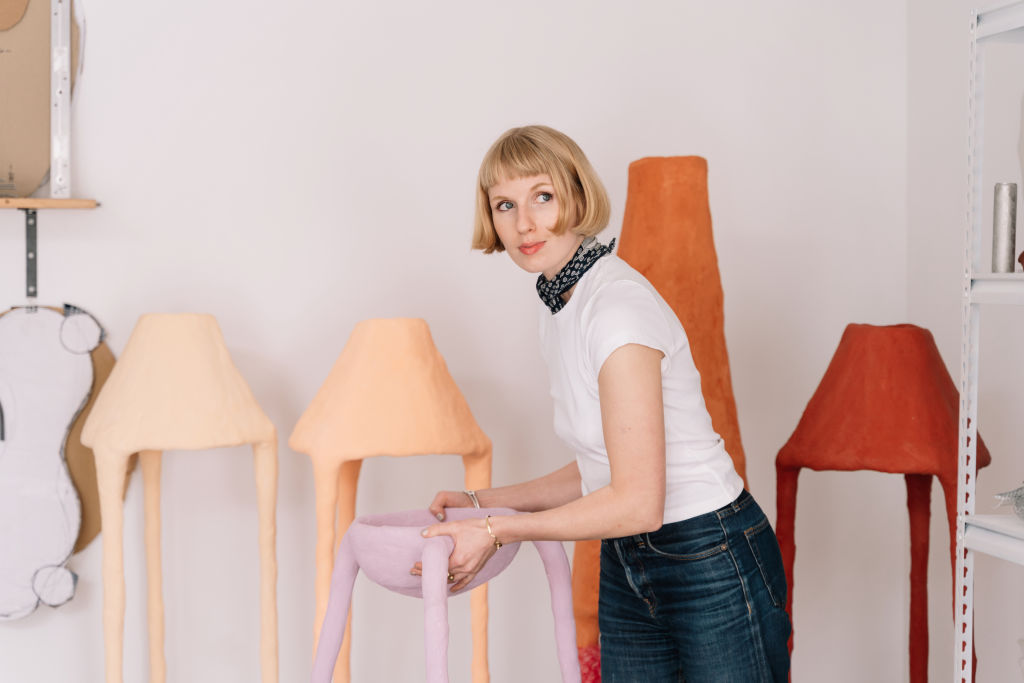
“Whimsical”, “weird” and “wacky” are just some of the words that have been used to describe Jordan Fleming’s plaster pieces. Her looming handmade creations are so lifelike that the Melbourne-based designer and artist says even she sometimes mistakes them for humans standing awkwardly in the corner of her studio.
“I don’t like using the word ‘creature’, but they are definitely reminiscent,” Fleming tells Broadsheet. “I think it’s good to have objects around you that have a bit of personality and exist in ways beyond their immediate function.”
Fleming’s core collection, Bright Things, is made up of oddly shaped long-legged lampshades handmade from sculpting plaster mixed with raw pigments. Her pieces come in small, medium and large sizes. The smaller shades are evocative of mushrooms – or maybe marine life – while the larger iterations are tall and towering. Gangly characters that look (almost) alive – part cartoonish humanoid, part functional decor piece.
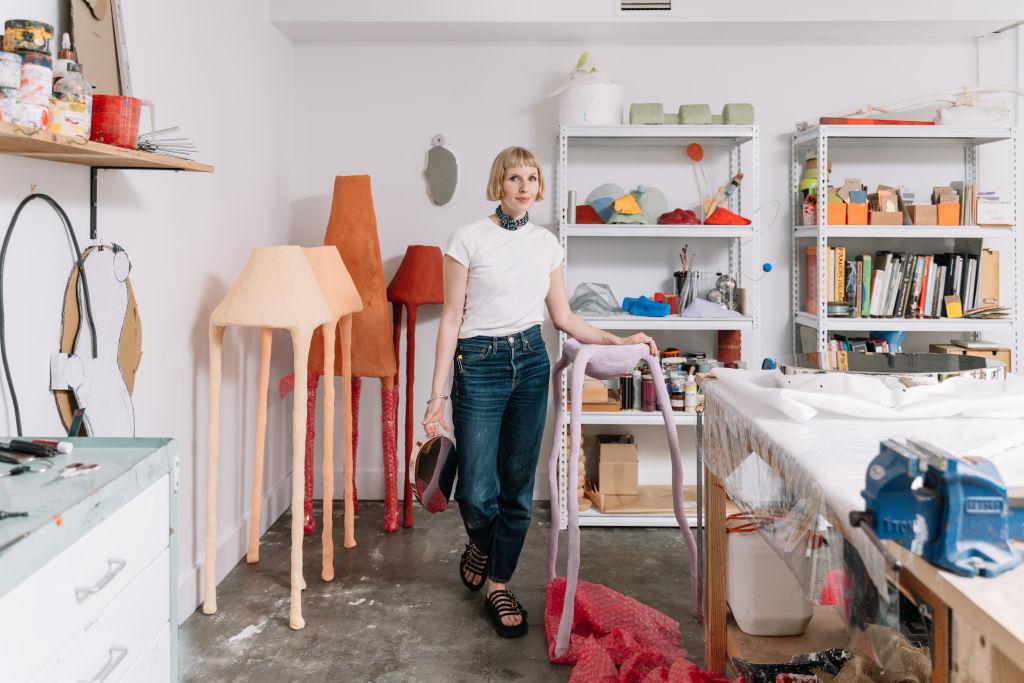
The lampshades start out as a collection of doodles, Fleming explains. Their transformation into theatrical lighting objects begins with a careful process of hand-sculpting plaster onto aluminium armature and then curing the shades for a couple of weeks to ensure sturdy construction and a roughhewn matte finish. Colours aren’t uniform across the collection (because pigments are hand-worked into each lot of plaster), but they run to hues like sky blue, brick red, green and lilac.
“It’s important that everything I create has a presence and embodies relatable qualities like asymmetry, imperfection, the human touch and contrasting proportions,” Fleming says. “I want to create a personal connection between the objects and people.”
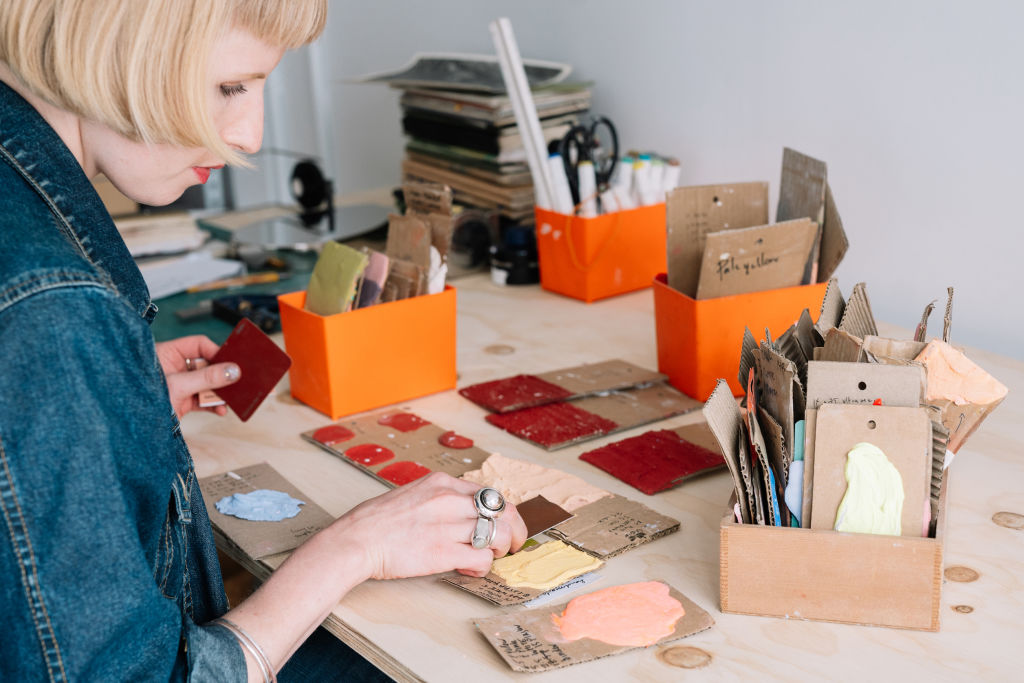
Like a lot of us, Fleming sees the world through an anthropomorphic lens. “Humans love giving characters to objects that don’t move,” she says. “Initially I tried to pull back on the oddness and asymmetry, but I figured it’s best if you lean into your intuitive feelings and visions when you’re making, because you can really create some delightfully wacky things.”
Fleming comes to her craft with a background in furniture making and interior design (and still occasionally practises the latter). The passion for furniture came from spending time in her university’s workshop space while studying a bachelor of design at UNSW. After uni, she went on to start an apprenticeship in cabinet making.
“I learnt most of my hand skills from that period of creating furniture pieces,” Fleming says. “It felt quite random – I’ve always been creative, but I never really thought I’d end up making furniture. In hindsight, my dad’s a carpenter and my grandpa was a cabinet maker, so it all sort of makes sense.”
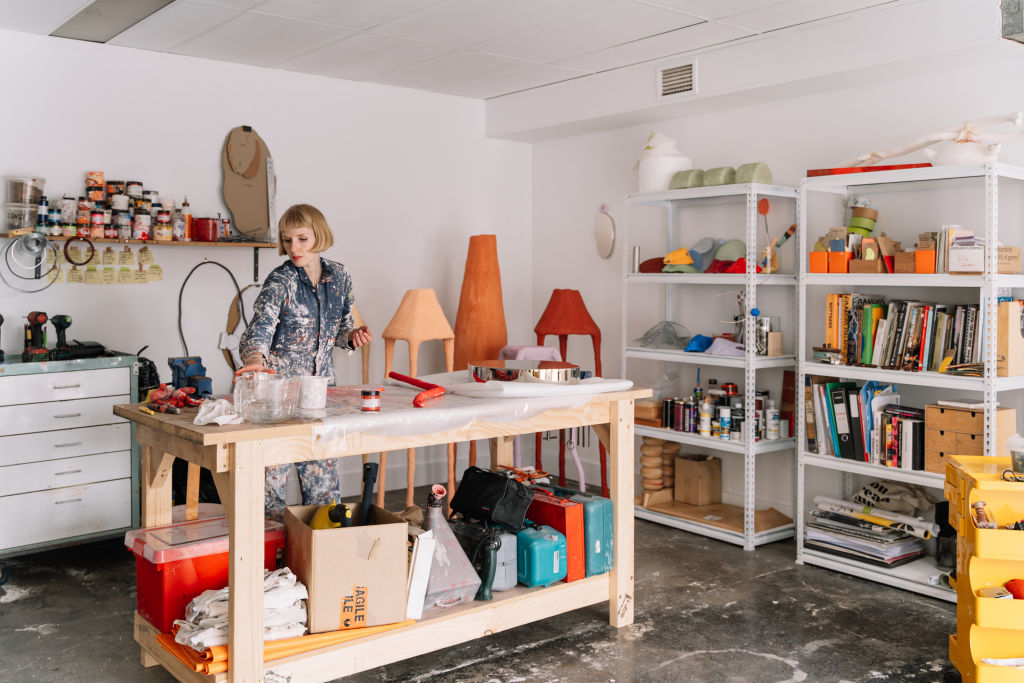
As it turns out, Fleming left her apprenticeship after realising she craved more creativity and the opportunity to interact with people instead of “just building a bunch of chairs”. She moved from Sydney to Melbourne and began to experiment with designing and creating her own home objects, moving away from timber and into new, less traditional, materials.
“Now I mainly like to work with plaster, pigment and metal, though timber does still feature,” she says. “Each new idea and project I embark on usually involves working with a new type of material. I like to test alternative ways materials can be used and really push their capacity.”
The final result is work that “blurs the lines between sculpture, art and object”, like Fleming’s human-scale lampshades or her newly released collection Looking at Me, Looking at You, a series of chrome aluminium mirrors in distorted face-like forms. Each comes adorned with playfully surreal plaster additions that might be semi-human (a flick of hair, a resting hand) or might just be oddball decoration.
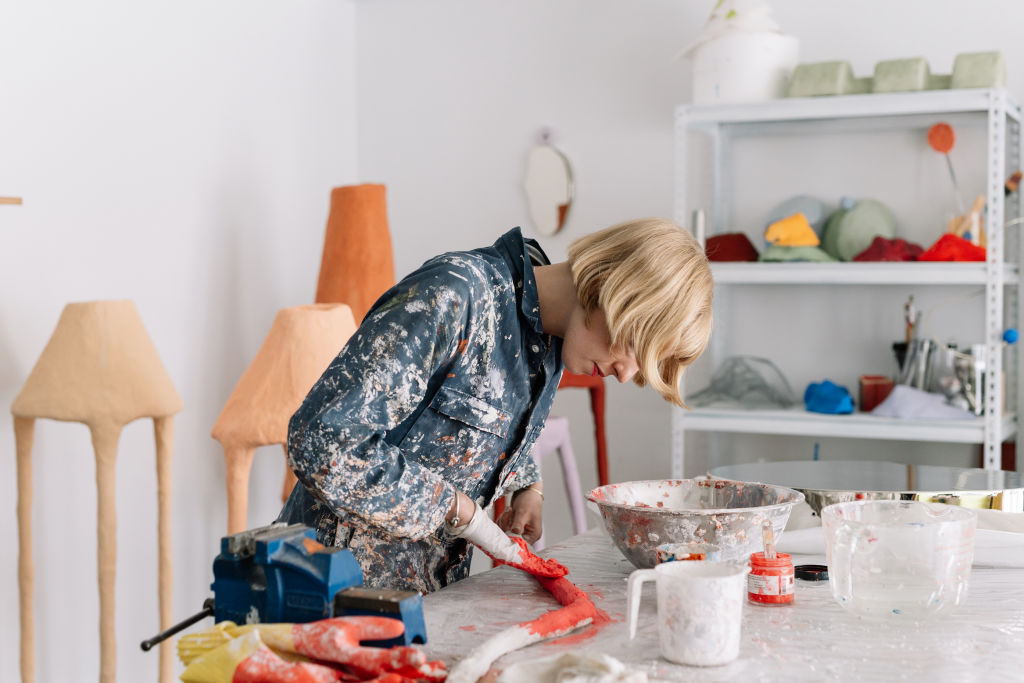
Louise Bourgeois, the installation artist known for large-scale sculptures – including massive iconic spiders – and punk fashion designer Vivienne Westwood are two creative heroes who have shaped Fleming’s approach to making. For continued inspiration, there’s also her dad’s place out in the country with its “strange nuts, organic weed growth and trees”.
“A big consideration for me is thinking about how things will look in a space,” she says. “I definitely design things with settings in mind, and how they will respond to the interiors of where they’re going.”
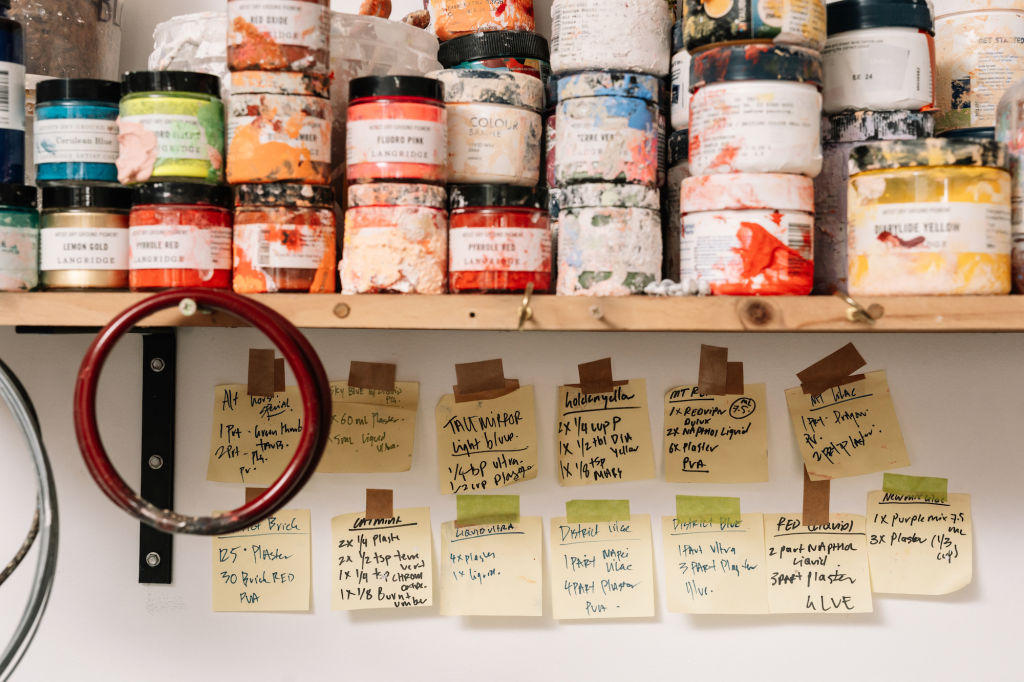
Fleming also takes on commissions for big brands and interior designers. She’s worked on commissioned pieces for large hotel chains, retail labels and a range of private clients – something she says is a “really fun” process.
“My commissions are where I get these really beautiful fusions between someone else’s ideas and my own, and then I get to make it all happen. They’re going out on a limb to trust you, and you just meet the most incredible people.”
Fleming’s Bright Things and other works have already taken her far. She’s had pieces featured at Melbourne Design Fair, Melbourne Fashion Festival, Lake Como Design Festival and at the iconic Milan Design Week. She’s a Vogue Living Top 50 Designer, recently featured as a finalist in Australian Design Review’s 30 under 30, and back in 2019 took out one of Frankie Magazine’s Good Stuff Awards.
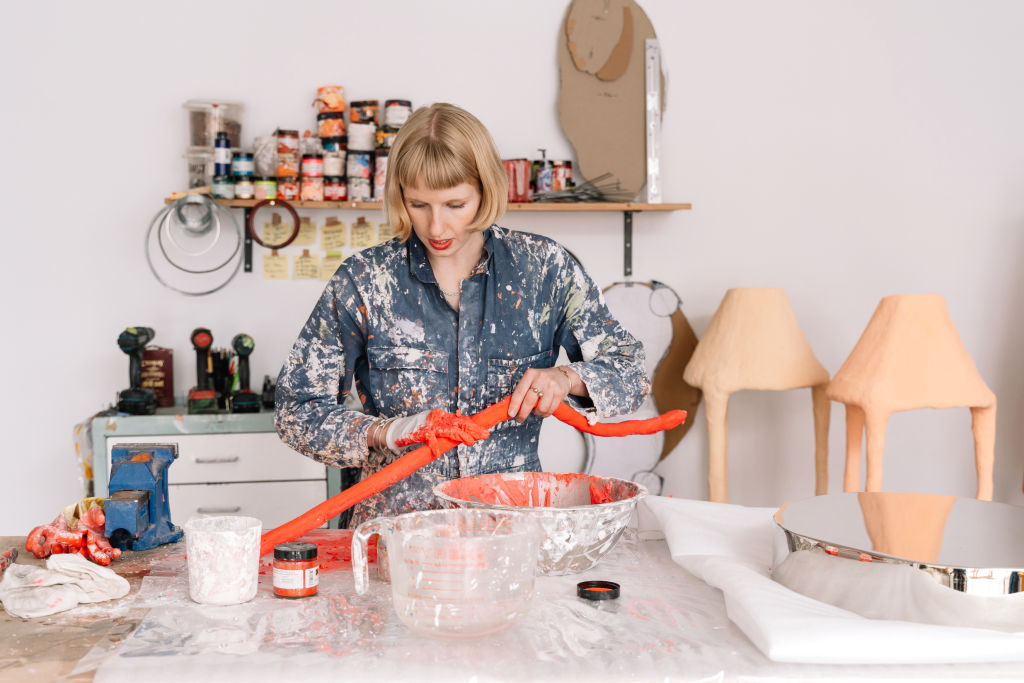
Right now the business is going through something of a growth spurt, though Fleming is still a solo maker. Having just moved into a new workshop in North Melbourne that she shares with her partner (also a creative), it’s the first time she’s been on the lease for a studio space. But as she scales her creating, juggling time and money has been the hardest part of managing her creative process.
“You create things and it’s amazing, but then the price point doesn’t really justify spending eight hours on it,” Fleming says. “When things are handmade you can’t really scale up and mass-produce as fast, so it’s all a big balancing act.”
Having a business is a lot of “making up as you go”, she says. “I never thought I would be running a business, and I’ll admit, I’m not a business-minded person. I still make dumb decisions, but it’s all a learning process and things I hopefully won’t repeat. I’ve learnt to now reach out for help and advice for the things I can’t do myself.
“My goal as I grow is to focus more on the business aspect, even though the making is the fun part. I’m starting to forecast and think ahead, and I’ve gotten better at saying no to things that aren’t quite the right fit for me.”
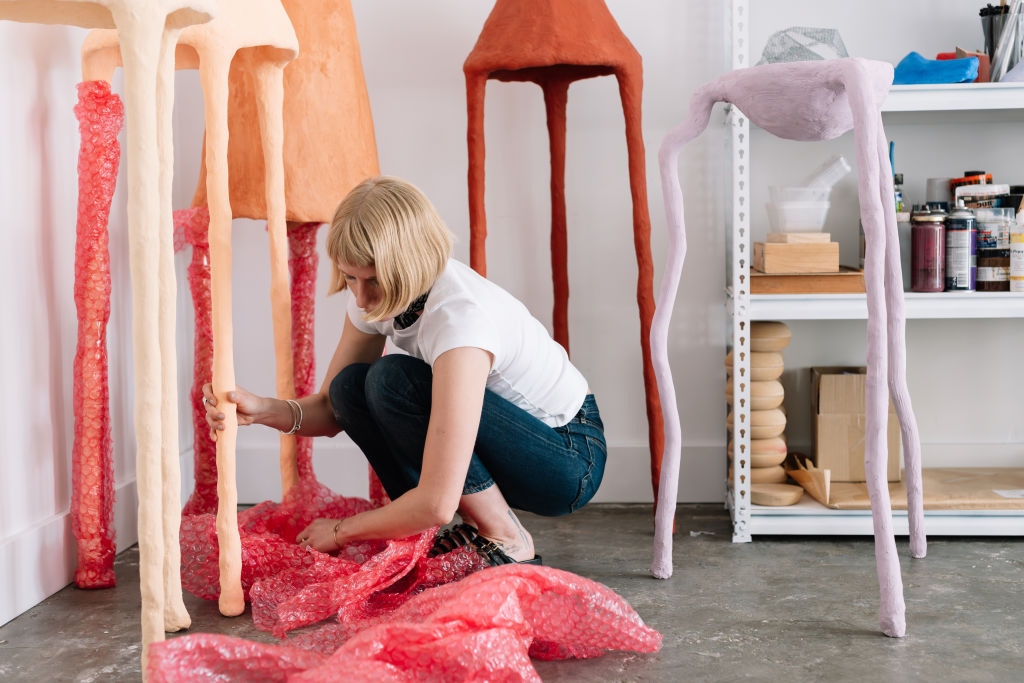
Balancing the avant garde with the commercial is the name of the game. Right now, Fleming is working on an experimental collector piece for Melbourne Design Week 2024, while also trying to figure out scalability. She’s in research and design for a new collection of “more commercial” pieces that sit at a more accessible price point and take less time to create than her one-of-a-kind works. “The goal is to balance my range of pieces, so there’s more variation and more options,” she says.
Fleming’s Bright Things lamps can be purchased handmade to order via jordanfleming.com.au, which is where enquiries about commissions can also be made. Retailer Modern Times stocks a limited range of her Bright Things and Looking at Me, Looking at You collections.
This article first appeared in Domain Review, in partnership with Broadsheet.
We recommend
States
Capital Cities
Capital Cities - Rentals
Popular Areas
Allhomes
More
